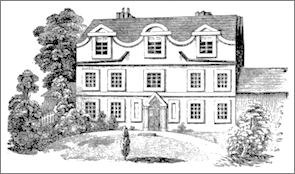Sands End
Sands End, Hammersmith & Fulham
Fulham’s former industrial district, now the site of high-profile riverside developments

In the Middle Ages the western part of Sands End was occupied by Fulham town meadows, where villagers grazed their cattle on the marshes, while Sandford manor lay to the north-east. The manor came into the possession of Westminster Abbey during the reign of Henry VII. Its Elizabethan manor house became a saltpetre factory in 1762 and various other kinds of factory later, including a pottery and a bleach and die works.
As drainage was improved, orchards and market gardens appeared but these were gradually erased by riverside industries, starting with the Imperial gasworks in the 1820s. The Kensington Canal was cut across the district but proved unprofitable and was later replaced by a railway line. Rows of terraced housing were laid out inland from 1870.
Fulham council built a power station in 1901 and a larger distribution centre in 1936. On Townmead Road Macfarlane Lang baked biscuits and Van den Bergh’s made margarine until the mid-1930s.
From the end of the Second World War the warehouses, works and wharves progressively closed down, leaving a wasteland by the 1980s. Many of the larger Victorian terraced houses were split into to flats. The Queen Elizabeth – a public house at the corner of Bagleys Lane and Pearscroft Road – was converted to a youth hostel.

The council designated Sands End’s river frontage a conservation area in 1991 to protect it from unsympathetic development, following some early excrescences.
A Sainsbury’s superstore has filled the site of the power station, Chelsea Harbour has been created in place of a former coalyard and the huge Imperial Wharf development has replaced the Imperial gasworks. Other projects have included the Harbour Club and apartments at Regent on the River.
There’s more to come soon, including the demolition of the Carnwath Road industrial estate and its replacement with yet more upmarket residences.
Sandford manor house, which now stands on Gwyn Close, at the end of Rewell Street, has been conserved (but not restored to its original state) and converted to offices. The house is grade II* listed – and hidden behind high walls and tall trees.
It is said that Nell Gwyn lived at Sandford manor house for a while, where Charles II visited her, but Nell was the sort of character who inspired many stories.
The essayist and politician Joseph Addison certainly lived at Sands End in the early 18th century, quite probably at the manor house.
